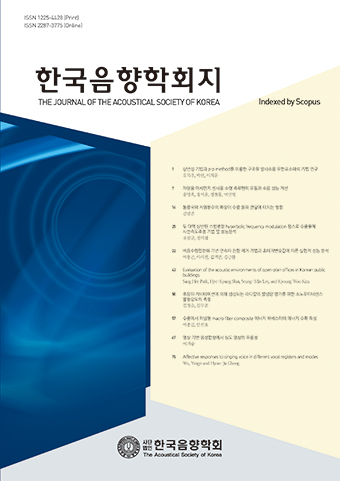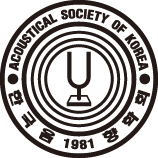Research Article
Abstract
References
Information
- Publisher :The Acoustical Society of Korea
- Publisher(Ko) :한국음향학회
- Journal Title :The Journal of the Acoustical Society of Korea
- Journal Title(Ko) :한국음향학회지
- Volume : 38
- No :6
- Pages :670-677
- Received Date : 2019-10-02
- Accepted Date : 2019-11-11
- DOI :https://doi.org/10.7776/ASK.2019.38.6.670




 The Journal of the Acoustical Society of Korea
The Journal of the Acoustical Society of Korea










